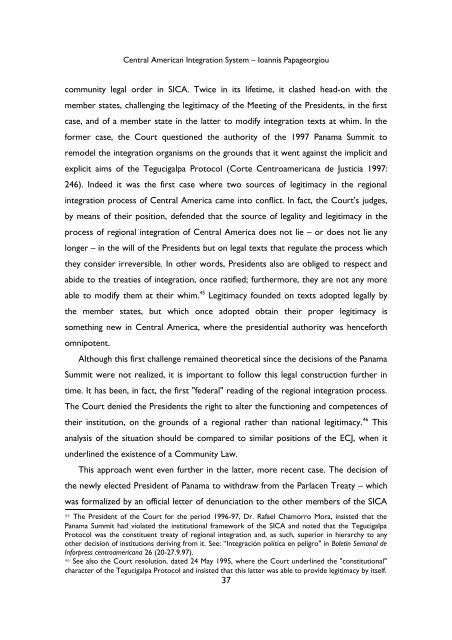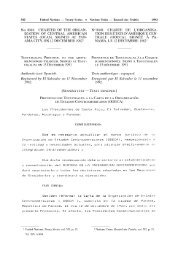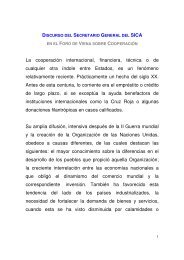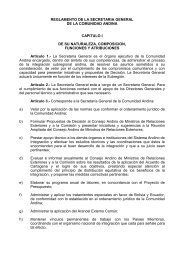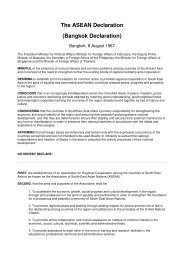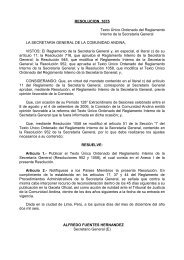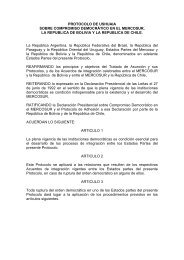Central American Integration System â Ioannis Papageorgiou
Central American Integration System â Ioannis Papageorgiou
Central American Integration System â Ioannis Papageorgiou
Create successful ePaper yourself
Turn your PDF publications into a flip-book with our unique Google optimized e-Paper software.
<strong>Central</strong> <strong>American</strong> <strong>Integration</strong> <strong>System</strong> – <strong>Ioannis</strong> <strong>Papageorgiou</strong><br />
community legal order in SICA. Twice in its lifetime, it clashed head-on with the<br />
member states, challenging the legitimacy of the Meeting of the Presidents, in the first<br />
case, and of a member state in the latter to modify integration texts at whim. In the<br />
former case, the Court questioned the authority of the 1997 Panama Summit to<br />
remodel the integration organisms on the grounds that it went against the implicit and<br />
explicit aims of the Tegucigalpa Protocol (Corte Centroamericana de Justicia 1997:<br />
246). Indeed it was the first case where two sources of legitimacy in the regional<br />
integration process of <strong>Central</strong> America came into conflict. In fact, the Court’s judges,<br />
by means of their position, defended that the source of legality and legitimacy in the<br />
process of regional integration of <strong>Central</strong> America does not lie – or does not lie any<br />
longer – in the will of the Presidents but on legal texts that regulate the process which<br />
they consider irreversible. In other words, Presidents also are obliged to respect and<br />
abide to the treaties of integration, once ratified; furthermore, they are not any more<br />
able to modify them at their whim. 45 Legitimacy founded on texts adopted legally by<br />
the member states, but which once adopted obtain their proper legitimacy is<br />
something new in <strong>Central</strong> America, where the presidential authority was henceforth<br />
omnipotent.<br />
Although this first challenge remained theoretical since the decisions of the Panama<br />
Summit were not realized, it is important to follow this legal construction further in<br />
time. It has been, in fact, the first "federal" reading of the regional integration process.<br />
The Court denied the Presidents the right to alter the functioning and competences of<br />
their institution, on the grounds of a regional rather than national legitimacy. 46 This<br />
analysis of the situation should be compared to similar positions of the ECJ, when it<br />
underlined the existence of a Community Law.<br />
This approach went even further in the latter, more recent case. The decision of<br />
the newly elected President of Panama to withdraw from the Parlacen Treaty – which<br />
was formalized by an official letter of denunciation to the other members of the SICA<br />
45<br />
The President of the Court for the period 1996-97, Dr. Rafael Chamorro Mora, insisted that the<br />
Panama Summit had violated the institutional framework of the SICA and noted that the Tegucigalpa<br />
Protocol was the constituent treaty of regional integration and, as such, superior in hierarchy to any<br />
other decision of institutions deriving from it. See: “Integración política en peligro" in Boletín Semanal de<br />
Inforpress centroamericana 26 (20-27.9.97).<br />
46<br />
See also the Court resolution, dated 24 May 1995, where the Court underlined the "constitutional"<br />
character of the Tegucigalpa Protocol and insisted that this latter was able to provide legitimacy by itself.<br />
37


